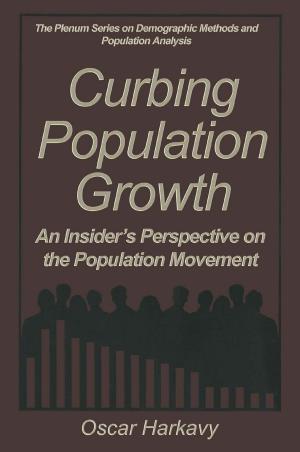Encyclopedia of Prehistory
Volume 8: South and Southwest Asia
Nonfiction, Social & Cultural Studies, Social Science, Archaeology, Anthropology, History| Author: | ISBN: | 9781461500230 | |
| Publisher: | Springer US | Publication: | December 6, 2012 |
| Imprint: | Springer | Language: | English |
| Author: | |
| ISBN: | 9781461500230 |
| Publisher: | Springer US |
| Publication: | December 6, 2012 |
| Imprint: | Springer |
| Language: | English |
The Encyclopedia of Prehistory represents temporal dimension. Major traditions are an attempt to provide basic information also defined by a somewhat different set of on all archaeologically known cultures, sociocultural characteristics than are eth covering the entire globe and the entire nological cultures. Major traditions are prehistory ofhumankind. It is designed as defined based on common subsistence a tool to assist in doing comparative practices, sociopolitical organization, and research on the peoples of the past. Most material industries. but language, ideology, of the entries are written by the world's and kinship tics play little or no part in foremost experts on the particular areas their definition because they are virtually and lime periods. unrecoverable from archaeological con The Encyclopedia is organized accord· texts. In contrast, language, ideology, and ing to major traditions. A major tradition kinship ties arc central to defining ethno is defined as a group ofpopulations sharing logical cultures. similar subsistence practices. technology, There are three types of entries in the and forms oj sociopolitical organizati01I, Encyclopedia: the major tradition entry.
The Encyclopedia of Prehistory represents temporal dimension. Major traditions are an attempt to provide basic information also defined by a somewhat different set of on all archaeologically known cultures, sociocultural characteristics than are eth covering the entire globe and the entire nological cultures. Major traditions are prehistory ofhumankind. It is designed as defined based on common subsistence a tool to assist in doing comparative practices, sociopolitical organization, and research on the peoples of the past. Most material industries. but language, ideology, of the entries are written by the world's and kinship tics play little or no part in foremost experts on the particular areas their definition because they are virtually and lime periods. unrecoverable from archaeological con The Encyclopedia is organized accord· texts. In contrast, language, ideology, and ing to major traditions. A major tradition kinship ties arc central to defining ethno is defined as a group ofpopulations sharing logical cultures. similar subsistence practices. technology, There are three types of entries in the and forms oj sociopolitical organizati01I, Encyclopedia: the major tradition entry.















